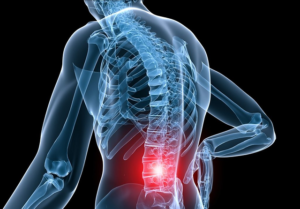The prevalence of lower back pain (LBP) has surged globally, with approximately 577 million individuals experiencing it at any given time in 2017, a significant increase from 377.5 million in 1990. LBP stands as the primary cause of years lived with disability, placing a substantial burden on healthcare systems and economies worldwide. In Australia, LBP incurs a staggering $30 billion in healthcare expenditure, and up to $45 billion is spent on unnecessary tests and treatments. So how do we address such a burden and prevalence of back pain? To do so, it is important to understand the risk factors, the role of medical imaging and the importance of conservative care as first line treatment.
Risk Factors for Lower back Pain:
Risk factors for LBP encompass various lifestyle and occupational elements, with odds ratios (a measure of association between an exposure and an outcome) indicating heightened susceptibility. Research has now found that factors such as poor sleep quality, prolonged driving, monotonous work, mental distress, and extended periods of standing have higher odds ratio, meaning exposure to these factors elevates the risk of developing LBP. However, moderate to high physical activity demonstrates a protective effect against LBP, and lifting frequently only slightly elevates the risk of developing back pain, emphasizing the importance of regular exercise in maintaining spinal health and challenging what we thought would increase our risk of back pain.
Transition from acute to chronic LBP affects a significant portion of patients, with contributing factors including BMI, smoking, psychological comorbidities, and the presence of back and leg pain. Non-concordant care (care that is not in line with health care guidelines) has been shown to elevate the risk of persistent LBP. A study by Stevens et al (JAMA, 2021) found multiple instances of non-concordant care substantially increasing the likelihood of chronic LBP at 6 months. This study looked at three categories: pharmacological therapies, diagnostic imaging and medical subspecialty referral and found that using all three of these increases risk by 69%, using two by 66% and using 1 by 58%, highlighting the importance of evidence-based practices in clinical decision-making (i.e physiotherapy, exercise physiology, Pilates etc).
Imaging Studies and Diagnostic Tests:
Imaging studies such as an MRI or Xray, while valuable in certain cases, often reveal degenerative spinal changes even in asymptomatic individuals, challenging the assumption that such findings directly correlate with pain. For example, a study found by Brunjiki et al (2014), found that by the time people reach the age of thirty , there was a 50% chance of having degeneration in the lumbar spine picked up by an MRI, even without symptoms. This shows that whilst disc degeneration and herniation may be prevalent in imaging, it may just be a normal, age-related finding and may not be the sole driver of someone’s pain experience.
Medical imaging has a time and place and is important if there is serious pathology and if multiple red flags are found (e.g. incontinence, loss of sensation, increased pain despite conservative care), but it should not play a role in the routine first stages of care. We must understand that the likelihood of back degeneration/herniation being present prior to imaging is high and therefore may not be the nociceptive generator for that persons experience of pain. Even if we could prove that degeneration is to be the main driver of someone’s pain, if people follow guideline care (such as better sleep, exercise, and nutrition) and pain improves after 6months or more, the degeneration status is likely to be the same, but symptoms, function and quality of life can improve.
Lower back pain is a multifaceted condition and is more complex than just physical aspects alone, overreliance on imaging and orthopaedic diagnostic tests may lead to unnecessary procedures and mismanagement of LBP. Treatment options must be looked at through biopsychosocial lens, where we are looking at our lifestyle factors (such as exercise, sleep, diet), social factors (e.g. monotonous work, relationships, mental distress) and biological factors (potential tissue damage, possible pathology). Incorporating this and following guideline care is essential to addressing the complexities of LBP and optimizing, aligning with patient expectations, and prioritizing evidence-based interventions.
For more information on what best care guidelines are for musculoskeletal pain, follow the link below.




